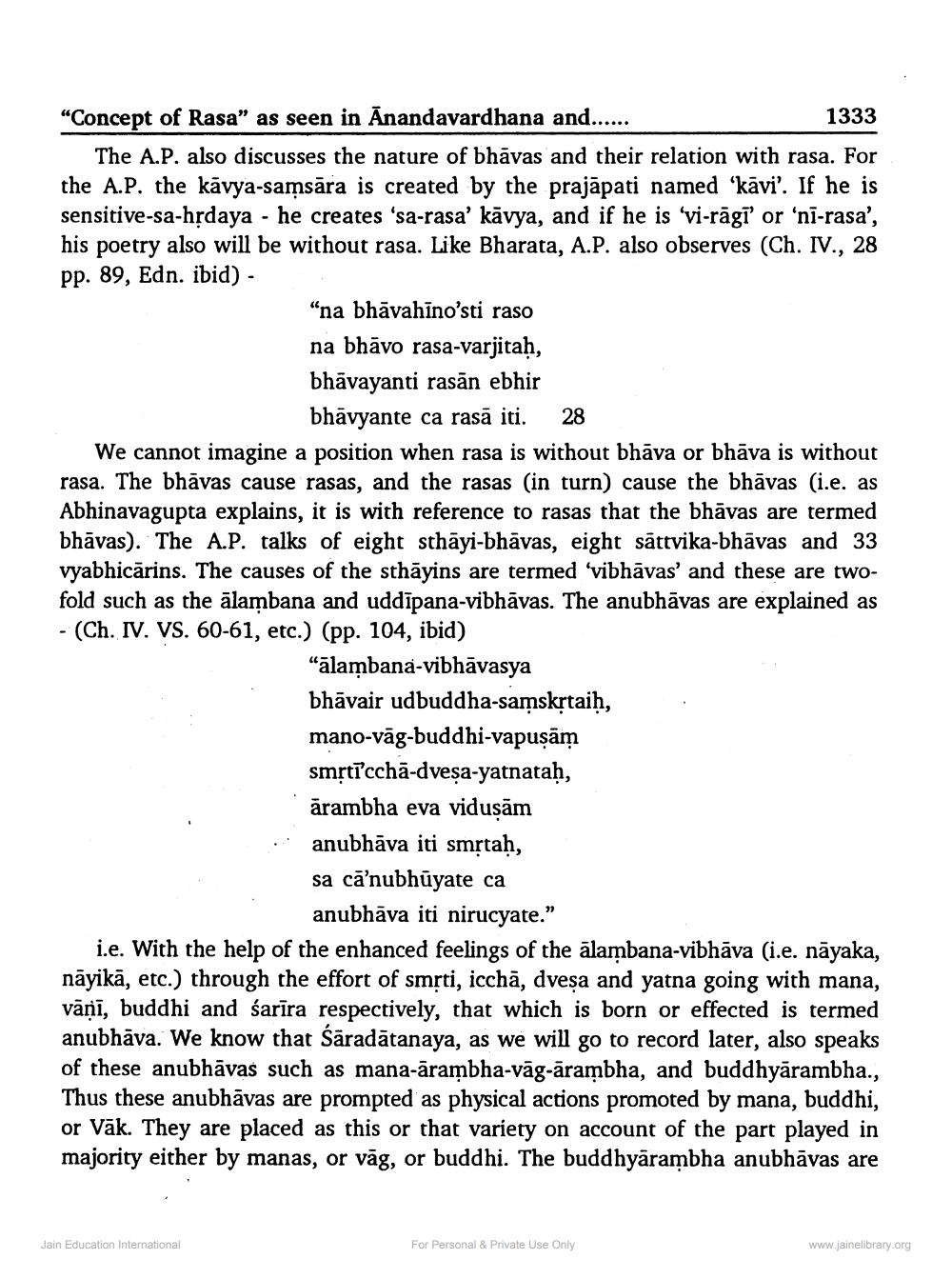________________
"Concept of Rasa” as seen in Anandavardhana and.....
1333 The A.P. also discusses the nature of bhāvas and their relation with rasa. For the A.P. the kávya-samsāra is created by the prajāpati named 'kāvi'. If he is sensitive-sa-hrdaya - he creates 'sa-rasa' kāvya, and if he is 'vi-rāgi' or 'nī-rasa', his poetry also will be without rasa. Like Bharata, A.P. also observes (Ch. IV., 28 pp. 89, Edn. ibid) -
"na bhāvahino'sti raso na bhāvo rasa-varjitaḥ, bhāvayanti rasān ebhir
bhāvyante ca rasā iti. 28 We cannot imagine a position when rasa is without bhāva or bhāva is without rasa. The bhāvas cause rasas, and the rasas (in turn) cause the bhāvas (i.e. as Abhinavagupta explains, it is with reference to rasas that the bhāvas are termed bhāvas). The A.P. talks of eight sthāyi-bhāvas, eight sättvika-bhāvas and 33
ns. The causes of the sthāyins are termed 'vibhāvas' and these are two fold such as the ālambana and uddīpana-vibhāvas. The anubhāvas are explained as - (Ch. IV. VS. 60-61, etc.) (pp. 104, ibid)
"ālambana-vibhāvasya bhāvair udbuddha-samskrtaiḥ, mano-vāg-buddhi-vapusām smrtī'ccha-dveşa-yatnataḥ, ārambha eva vidusām anubhāva iti smrtaḥ, sa cā’nubhūyate ca
anubhāva iti nirucyate.” i.e. With the help of the enhanced feelings of the alambana-vibhāva (i.e. nāyaka, nāyikā, etc.) through the effort of smộti, icchā, dveșa and yatna going with mana, vānī, buddhi and śarīra respectively, that which is born or effected is termed anubhāva. We know that Säradātanaya, as we will go to record later, also speaks of these anubhāvas such as mana-ārambha-vāg-arambha, and buddhyārambha., Thus these anubhāvas are prompted as physical actions promoted by mana, buddhi, or Vāk. They are placed as this or that variety on account of the part played in majority either by manas, or vāg, or buddhi. The buddhyārambha anubhāvas are
Jain Education International
For Personal & Private Use Only
www.jainelibrary.org




